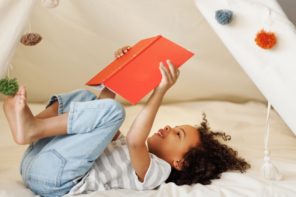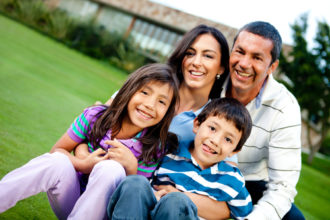Two first grade boys argue on the playground while playing kickball with a group of kids. One calls the other a cheater and threatens to tell the teacher. The other boy yells back that he’s not a cheater, but that he never wants to play with the other boy again. He stomps away from the kickball field with his head down. The game resumes without him.
Building friendships is a process, and there are generally a few bumps along the road. While these ups and downs may seem minor, hurt feelings between friends can lead to unkind interactions and shifting friendships. The boy who was called a cheater, for example, chose to end this conflict by walking away, but the conflict wasn’t actually resolved.
Conflict resolution skills play an important role in healthy friendship development. A child who struggles to cope with frustration, for example, is likely to project that frustration onto a friend. A child who has difficulty finding solutions to friendship problems might feel hopeless when an argument occurs. A child who doesn’t know how to verbalize his feelings will likely freeze up and shut down when conflict occurs.
The good news is that young children can learn to manage emotions and conflict to learn how to handle tricky friendship situations. With a few strategies, kids can become problem solvers and maintain their friendships, even when conflict occurs.
Teach the Stoplight
Ask your child to close his eyes and picture a stoplight. When the red light is on, he should take three deep breaths and think of something calming. When the light turns yellow, it’s time to evaluate the problem. Can he handle this on his own? Does he need adult help? Think of two problem solving strategies that might work. When the light turns green, choose a strategy (ask for help, go outside and run around, work on a compromise) and give it a try.
Using the red light to calm down helps kids better able to understand the problem and choose a strategy. Practicing the stoplight when your child is calm will also help your child remember the process.
Model Empathy
It’s natural for young children to feel overwhelmed with big emotions when they encounter a friendship problem. Sometimes a small disagreement feels like a huge issue. Listening and showing empathy not only helps kids feel heard and understood, but it also helps them learn how to empathize with others.
When your child comes to you to vent about an issue with a friend, get on eye level with your child and empathize. “It sounds like you had a hard time with your friend today. I can hear that you are frustrated and upset,” shows your child that you hear and understand what he’s going through. It’s okay for kids to experience heated emotions; it’s what they do to work through those emotions that matters. Going to a parent for support is a great coping strategy.
Listening and empathizing are helpful strategies in the moment. Parents don’t have to solve every problem. In fact, we shouldn’t. Providing a safe space to talk about and process emotions is the best support.
Practice Talking About Feelings
Young children tend to react quickly to upsetting events. Being quick to frustration or engaging in black and white thinking and blaming are common reactions to friendship troubles with young children. They need to practice talking about their feelings in a healthy and calm way.
Teach your child to use “I feel” statements when upset with a friend. When kids learn to use these statements, they focus on how a behavior affected them without resorting to blaming.
“I feel angry when something is grabbed out of my hands. Please don’t do that,” states the feeling and the behavior without arguing or displacing the angry feelings. “I feel lonely when I’m not included at recess. Can I please join your group next time?” lets another child know that feeling left out hurts and offers a solution.
Practice Brainstorming Solutions
While it might seem easier to help children solve a problem by telling them what to do to fix it, kids become better problem solvers when they learn how to find solutions on their own.
Get a blank sheet of paper and markers in a variety of colors. Ask your child to describe what happened from start to finish from her point of view. When she’s finished, ask her to pick a color and brainstorm three possible solutions to the problem that might work for her. Next, ask her to step into her friend’s shoes and try to retell the story from her perspective.
This can be difficult and might take a few tries. Ask her to choose a color to represent her friend and brainstorm three possible solutions that might work for her friend. Finally, ask your child to look for the common ground. Is there a solution that might work for both? If not, brainstorm three more solutions that meet in the middle.
By looking at the struggle from different perspectives, kids learn to empathize with their peers and look for solutions that help everyone involved.
Create a Jar of Problem-Solving Sticks
Chances are, your child comes up with a lot of potential solutions when brainstorming problem solving strategies with you. Write them down on popsicle sticks and store them in a mason jar. The next time your child struggles to come up with a workable solution to solve a problem with a peer or a sibling, ask him to look through the jar and give one a try.
Kids will experience ups and downs with their friends as they grow and change. That’s part of growing up. By preparing kids with strategies to cope with these upsetting situations, they are better able to work through the obstacles and preserve their friendships.
Katie Hurley, LCSW is a child and adolescent psychotherapist and parenting educator in Los Angeles, CA and the author of The Happy Kid Handbook: How to Raise Joyful Children in a Stressful World (Tarcher/Penguin 2015).
To see more visit PBS Parents.





